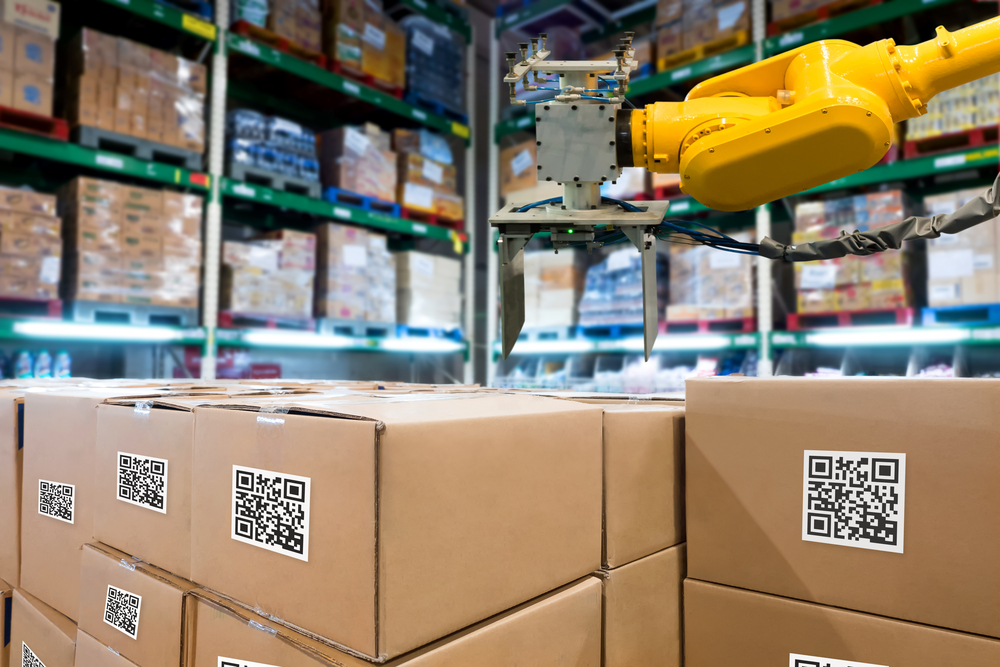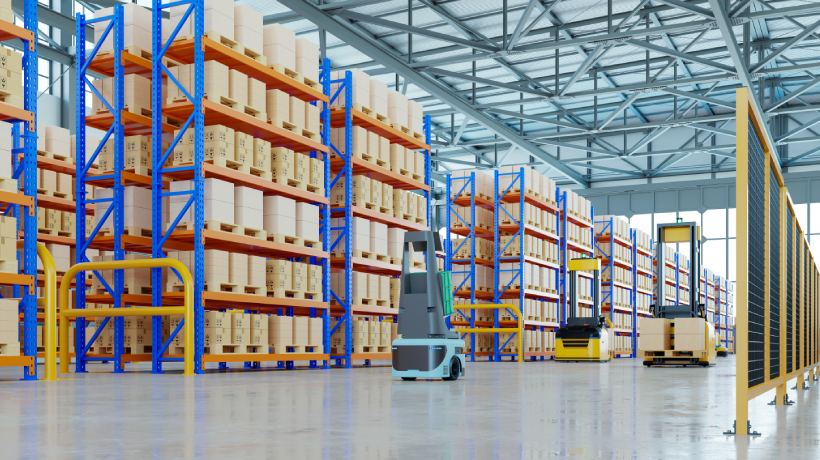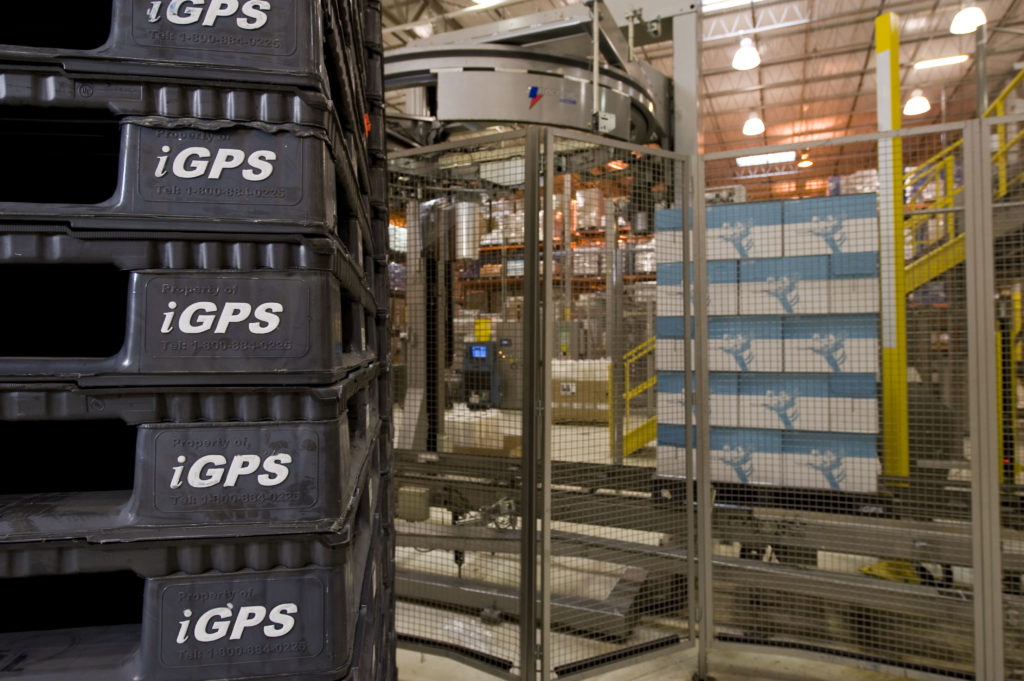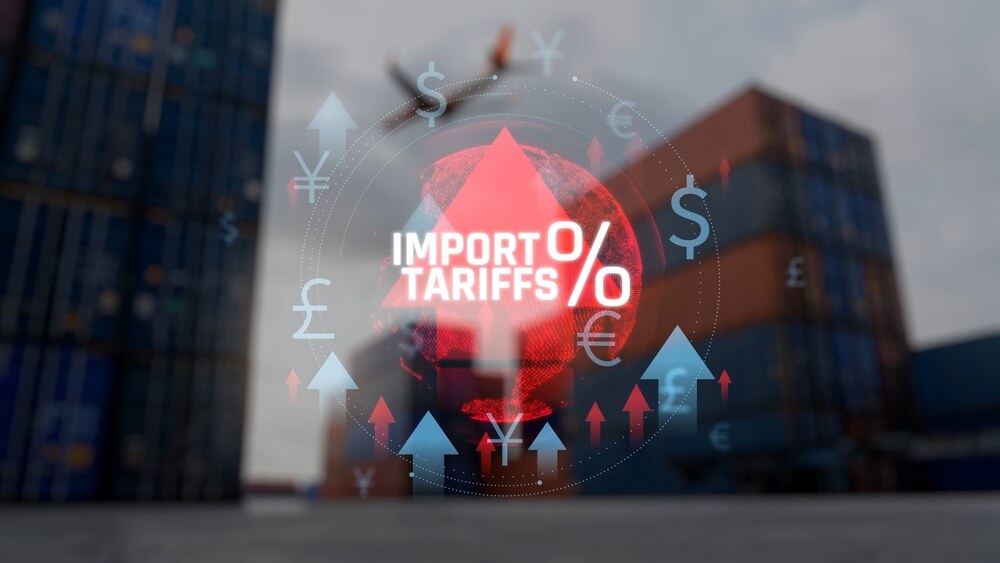Investing in supply chain optimization tools such as automated storage and retrieval systems and palletizers is a major step for most organizations. These tools can increase efficiency, reduce human error, and ease the burden on employees of handling products and pallets.
Key Takeaways
- Automated Storage and Retrieval Systems (ASRS) improve space utilization, accuracy, throughput, and labor.
- Palletizers automate pallet loading/unloading.
- Supply Chain Management Software (SCMS) integrates planning, forecasting, execution, and visibility.
- Supply chain optimization tools boost cost savings, improve service levels, are scalable, and assist with risk mitigation.
- RFID-enabled plastic pallets continue to support automation reliability and traceability.
In 2025, supply chains are moving goods with new speed and intelligence. And for good reason: labor costs are rising, disruptions are hitting harder, and customer expectations are sky-high.
Businesses need AI-powered planning platforms and warehouse robots that never clock out. This is why warehouse managers are intentionally investing in supply chain optimization tools that leverage AI, predictive analytics, and scenario planning to optimize inventory, demand, transportation, and warehouse operations.
Best Supply Chain Optimization Tools
While there is an increasing number of supply chain optimization tools entering the marketplace, key capabilities should be prioritized and provided priority consideration when evaluating and selecting new tools or platforms.
First, being AI‑powered and cloud‑native should be a priority. These capabilities can instantly generate “what‑if” scenarios and quickly update sales, supplier information, and logistical forecasts.
From sourcing to last‑mile delivery, supply chain optimization tools should combine real‑time demand planning and scenario modeling with inventory optimization.
Indeed, the management of warehouse operations is no easy feat. However, with the integration of human oversight and accredited supply chain systems, warehouse orchestration can be supported by securely connecting planning outputs to execution systems, which can allow warehouse managers to quickly make necessary adjustments.
Major retailers like Target and Walmart are doubling down on AI to manage stock proactively and prevent inventory shortages—evidence that these capabilities are moving from “nice‑to‑have” to a business and infrastructure imperative.
Automated Storage and Retrieval Systems (ASRS)
In addition to these tools, Automated Storage and Retrieval Systems (ASRS) are increasingly deployed across modern warehouses, as these integrated systems can be invaluable to the placement and retrieval of products and pallets coming in and going out.
Cranes and shuttles transport pallets, with the help of sophisticated software tools, power ASRS, but what they’re best at is using vertical space effectively, freeing up to ~85% of floor space compared with static shelving and cutting the time warehouse workers spend moving, oftentimes, heavy goods around.
The customization and scalability with ASRS types may unlock additional layers of value for warehouse managers by:
- Moving and organizing large pallets with Unit-Load Systems
- Moving bins and other smaller items with Mini-Load Systems
- The transport of goods with Shuttle-Based Systems
Market research shows robust growth for ASRS through 2030, which only serves to reinforce their value.
There are options to choose from: conventional, in‑line, layer‑build, robotic, and collaborative (“cobot”), which shift repetitive, high‑strain lifts from people stacking pallets at shipping lanes to machines. By using palletizers, warehouses also reduce the occurrence of musculoskeletal disorders (MSDs), one of the most common types of workplace injuries that happen in the transportation and warehousing sector, according to the U.S. Government Accountability Office. These are often attributed to overuse of muscles, tendons, and ligaments to perform repetitive tasks.

Supply Chain Management Software (SCMS)
By nature, warehouses are constantly moving the inflow and outflow of goods.
This is why SCMCS can be indispensable within the warehouse management ecosystem—from tracking and recording shipments to processing transactions across the supply chain. They are equipped with powerful features, which include supply and demand planning, scenario modeling, and real-time logistics visibility that can be seamlessly integrated with existing transportation and warehouse management systems (TMS/WMS).
Investing in Supply Chain Management Software (SCMS) can lead to improved decision-making, cost analysis, and the identification of potential operational efficiencies.
Benefits of Using Supply Chain Optimization Tools
Implementing supply chain optimization tools represents an opportunity to enhance warehouse management operations—not replace human decision-making by warehouse managers and leaders.
Predictive analytics are a prime example—they’re highly scalable and agile, which can allow warehouses to adapt quickly to shifts in demand and take advantage of potential growth opportunities. Analytical tools can provide extra support to warehouse managers when unforeseen events occur, from natural disasters to global supply chain disruptions, enabling warehouses to remain operable, efficient, and safe.
While there is no replacement for human oversight, operations can be expedited with support from automated systems and AI-backed planning. This allows warehouses to process orders efficiently and quickly, without compromising quality, excessive inventory, or safety.
The Power of Integrating ASRS and Palletizers
While ASRS and palletizers offer unique value, the ability to integrate both presents a unique and additional layer of value. This includes streamlining warehouse operations and ensuring a seamless flow from storage to shipment.
Traditional plastic pallets, ubiquitous in any warehouse, are also becoming smarter. An example of this is using RFID technology, which provides positive pallet identification. This embedded technology enables pallet shipment identification, which can be quickly retrieved and stored while ensuring pallet dimensions are consistent. Additionally, this technology warehouses and warehouse managers the benefit from real-time analysis, visibility, and traceability into their pallet shipments.
Frequently Asked Questions
How do I choose between ASRS and palletizers?
ASRS should be used for storage optimization, whereas palletizers should be selected for outbound packing.
How should I prioritize investments—software or automation?
When considering which to invest in, look at Supply Chain Management Software first so you know where constraints and benefits lie within your warehouse. Then look at automation to remedy your biggest bottlenecks and amplify existing investments.
Do I need RFID with plastic pallets?
RFID makes it easier to trace, find, and verify the location of plastic pallets, especially at docks and transfer points.
What supply chain optimization tools capabilities should I be looking for?
Look at any supply chain optimization tools that are AI‑powered and cloud‑native, as they allow instant access to sales, supplier, and logistical data. These tools should also combine real‑time demand planning and scenario modeling with inventory optimization, logistics management, and network design to aid with key decision-making. Warehouse orchestration can connect planning outputs to execution systems, making it easier to reprioritize when shipment delays occur.
Companies striving to optimize their supply chain operations and control costs depend on durable, lightweight iGPS plastic pallets for all their shipping needs. For more information, contact us at 1-800-884-0225, email a specialist at switch@igps.net, or visit our contact page.



